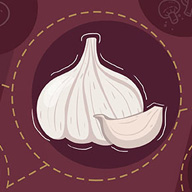An important thing to remember before looking at lactose intolerance as a health condition is to distinguish it from a milk allergy. They are not the same. While lactose intolerance can cause discomfort or indigestion, a milk allergy is far more serious and can result in life-threatening reactions such as anaphylaxis.
Lactose is a sugar found in dairy and dairy products, such as milk, yoghurt, cheese, cottage cheese, and ice cream amongst others. Other foods such as bread, canned food and frozen food can also contain lactose – the details of which can be found on the packaging. When anyone eats food containing lactose, it is broken down by an enzyme called lactase – produced in the small intestine. The lactase breaks lactose into simple sugars, which are later absorbed by the large intestine. For those who are lactose intolerant, the body does not produce enough lactase and as a result, unabsorbed lactose remains in the body. This can create symptoms which are known as intolerance. If the symptoms are not extreme, they can often go unnoticed in children and are sometimes chalked up to children simply disliking milk.
Lactose intolerance often develops in childhood. However, in some cases, it also presents itself in teens and adults; much later in life. There are many symptoms to look out for if parents are concerned their child is suffering from lactose intolerance. Parents should keep them in mind when approaching a pediatrician or doctor later. These symptoms can appear hours after a child has consumed dairy and can vary from mild to severe based on the amount they have consumed and the level of their intolerance.
Children can experience nausea, bloating, diarrhoea, abdominal pain and gas if they suffer from lactose intolerance. The same applies to adults. The simplest way to check if a child or even an adult is lactose intolerant is to remove dairy products from their diet for two weeks to see if the symptoms of discomfort go away. After two weeks, slowly reintroduce dairy products in small amounts and monitor if they experience any of the symptoms mentioned above.
There are other foods which can provide calcium to people suffering from lactose intolerance. These include dark green leafy vegetables like spinach and kale, nuts such as almond, white beans and fish (for those who are non-vegetarian). Calcium supplements are a last resort and must be recommended by a doctor.







